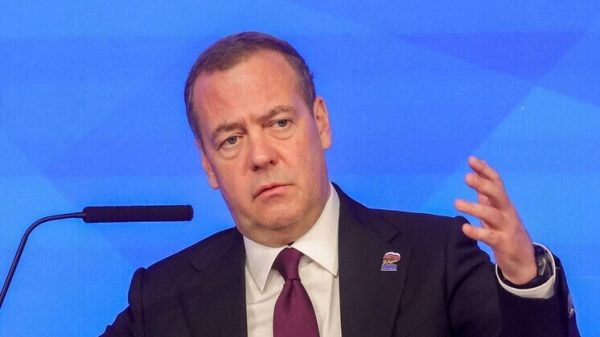
High school students in the US are very familiar with the glossy college brochures that come in the mail during their last years in high school. Full of pictures of smiling students with backpacks on their shoulders, huge grassy lawns and shiny dorm rooms, the brochures hold out the promise that attending their school will be the best four years of a person’s life.
The competition to get students to enroll and pay for a specific school has a price. New dorms, classrooms and athletic facilities may convince students, especially those who will pay the full price of tuition, to enroll in one school over another – or so school administrators appear to think. This is why college tours are so popular: for many students, college is the campus.
And that experience does not come cheap. The average cost of attending a four-year public college in the 2017-2018 school year was $20,050. The average tuition at private institutions was over twice that at $43,139. Slow increases in the cost of college have been the norm for decades, and with that, about 44 million Americans collectively owe student debt worth $1.6tn.
A college education still ultimately pays off: on average, a college degree gets a person $30,000 more in salary each year than a person with a high school degree. But the era of Covid-19 has led many to question those costs and once more highlighted the fact that higher education institutions are businesses too, businesses that rely heavily on revenue coming from their customers: students.
“The challenge is that colleges need to meet their customer, and their customer in a lot of cases wants that in-person experience. That’s what we have societally stereotyped college as. It’s what students believe,” said Ben Miller, vice-president of post-secondary education at the Center for American Progress, a leftwing think tank. “They’ve had to sell a certain experience to their customer.”

But in the spring, the Covid-19 pandemic swiftly led to the closure of campuses when states began to issue stay-at-home orders. Schools sent students home and moved all classes online. The term “Zoom University” was frequently used by college students to refer to the fact that, for most, college was now taking place in their childhood bedrooms.
That colleges shut their campuses did not mean they were saving money in the spring. Institutions spent millions of dollars refunding students for room and board and unused meal credits. More had to be spent to get professors acquainted with virtual learning. Rutgers University in New Jersey, a public university system with over 70,000 students, said that it spent $50m just from refunds for students’ dining, housing and parking last spring. McDaniel College in Westminster, Maryland, which has a student population of 3,000, said it lost $4m for the same expenses.
Facing millions of dollars in losses, many colleges have announced furloughs for staff, hiring freezes and layoffs. Over the summer, layoffs were seen at the University of Texas San Antonio, Ohio University and the University of Michigan at Flint.
The Cares Act in March saw $14bn in federal aid going to colleges and universities. Of the $14bn, $12.5bn was distributed to institutions based on how many of their students receive federal grants, known as Pell Grants. Colleges serving minority students received $1bn in aid while $350m was left for any other schools with “significant unmet needs”.

Colleges and universities said that the funding, while helpful, was not enough. Several advocacy groups for college and universities wrote a memo that said $50bn was needed to offset the costs that institutions were incurring from the pandemic and another $7.8bn would be needed to aid the transition to online learning.
With the Care Act offering little respite to institutions, leaders of many colleges and universities knew that they had to think of a way to reopen their campuses in the fall.
In April, Brown University’s president Christina Paxson wrote an op-ed in the New York Times that explicitly outlined what keeping campuses closed would mean for the finances of institutions. Paxson, an economist, wrote: “The basic business model for most colleges and universities is simple – tuition comes due twice a year at the beginning of each semester. Most colleges and universities are tuition dependent. Remaining closed in the fall means losing as much as half of our revenue.”
“This loss, only a part of which might be recouped through online courses, would be catastrophic.”
Paxson pointed out that institutions employ as many as 3 million Americans and contribute $600bn to the US economy. “Colleges and universities are some of the most stable employees in municipalities and states,” she wrote.
Even as stay-at-home orders continued in many states, and the country experienced its worst outbreaks of the virus over the summer, particularly among young adults, colleges and universities were brainstorming how they could reopen.

The vast majority of schools released plans to conduct some type of hybrid on-campus learning. Promises of frequent testing, diligent contact tracing, quarantine dorms and the end of crowded lecture halls were still not enough to convince some students to enroll. Though it is unclear how many students in the country are taking a gap year or semester off, one survey indicated up to 40% of students were considering it.
Schools that have taken the step to reopen their campuses have been met with mixed success. Many schools have seen over 1,000 cases since reopening, including the University of Alabama and Colorado State University. A handful of schools, including the University of North Carolina Chapel Hill and Temple University in Philadelphia, shut their campuses for the rest of the semester after outbreaks popped up on campus. Some schools are charging additional Covid fees on top of the usual cost of attendance to account for the price of testing, contact tracing and other measures to prevent an outbreak.
Meanwhile, institutions that indicated they were running the semester completely online came under pressure from students to decrease tuition to reflect the downgraded experience they would be getting. Georgetown and Princeton agreed to reduce tuition by 10%, while Stanford and Harvard refused to budge the cost.
Thousands of students have signed petitions asking their colleges to reduce the cost of tuition since their tuition is not going to an on-campus experience.

Meghan Marzella, a junior at Ithaca College in New York, said that she and other students understand why schools shifted all classes online but are frustrated they are paying the same price as they did when they were on campus.
“There’s a lot of on-campus resources that we pay for via tuition that we now don’t have access to. Like the fitness center, the library – the computers in the library have a lot of programs that students can’t access otherwise,” said Marzella, who wrote a petition to her school over the summer to reduce tuition. “These are all things that students are still being asked to pay for and not being able to access.”
In a statement to the Guardian, Ithaca College said that, like many institutions, the school “relies upon a single gross tuition rate for our entire undergraduate program” and that factors like number of faculty, faculty salaries and student-to-faculty ratios are calculated in the price of tuition.
In addition to increasing pressure to reopen campuses, higher education experts agree that lackluster federal assistance will ultimately hurt students for years to come. Some schools could close and tuition could rise even more for students, exacerbating the student debt crisis. The campus as we once knew it will probably come back, but it will likely be more expensive.
“There are going to be colleges that, if they wish to survive, don’t have any option but to charge higher prices,” said Kevin McClure, a professor of higher education at the University of North Carolina Wilmington. “If this follows the course of past recessions, we’ll see college affordability and student debt getting worse.”






















































Свежие комментарии